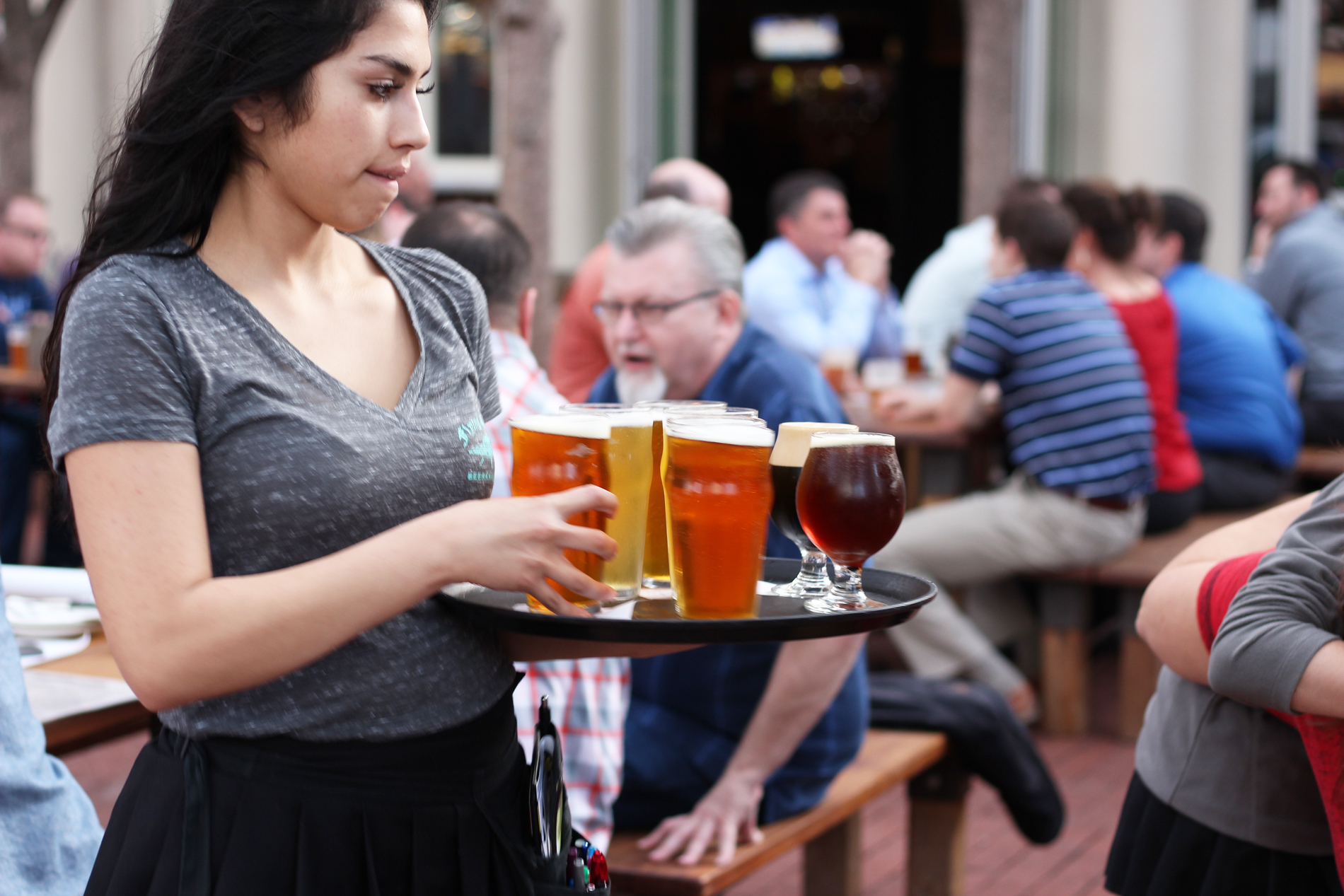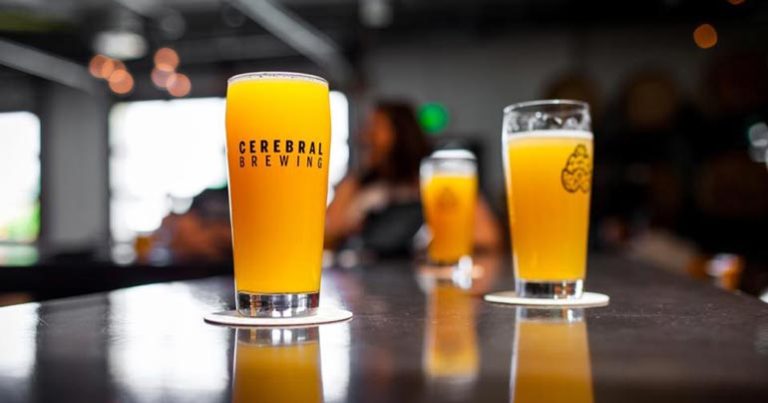2018 Restaurant Trends
2017 was a good year for restaurants and the U.S. economy, though beer sales held…

Restaurant industry sales reached a whopping $798.7 billion in 2017, which marked a 4.3 percent increase over 2016 sales – the eighth straight year of gains for the industry. In contrast, total beer dollar sales in 2017 were a little more than $34 billion, a modest 1.2 percent increase from the previous year. Total beer volume sales were essentially flat – down 0.4 percent.
According to the National Restaurant Association, of the $798.7 billion in sales in 2017, $263 billion (3.5 percent growth) was ascribed to full-service establishments and $234 billion to quick service and fast casual (an impressive 5.3 percent growth).
What’s Trending in 2018?
Nearly 700 professional chefs were surveyed in late 2017 by the National Restaurant Association regarding what will be the hottest restaurant trends in the year ahead. The number one culinary concept (favored by 74 percent of responders) was hyper-local sourcing, which entails using ingredients that were grown and harvested on the restaurant’s premises.
For example, restaurant gardens that grow their own produce, brewpubs and restaurants that feature on-site beer brewing, or establishments that bake their own bread or produce their own charcuterie are all examples of hyper-local sourcing.
Other top predicted trends included house-made condiments, which falls in line with the hyper-local sourcing trend as it involves creating fascinating new condiment combinations − such as ketchup made with curry powder or tartar sauce made on a restaurant’s premises − with fresh, hyper-local ingredients.
Authentic ethnic-inspired ingredients are sure to be another big trend in 2018, as 52 percent of all adults say they consume more ethnic cuisine than they did two years ago. This renewed focus on ethnic-inspired dishes means that restaurants will branch out from their restaurant’s “theme” to cater to all taste palates.
In that vein, more than 4 out of 10 restaurateurs “believe that offering ethnic-cuisine items outside the main menu theme will become more common,” according to the National Restaurant Association.
Some ethnic dishes also fall in line with another major trend, which is the rise in popularity of street food-inspired dishes – or those you’d see on the streets of major cities worldwide. A few examples are tempura, kabobs, dumplings or pupusas.
Beer-Centric Restaurant Trends
According to the National Restaurant Association, the second- and third-most popular trends in the alcoholic beverages category are right in line with what was expected of trends in the restaurant industry at large.
While the general term of “artisanal/craft spirits” takes the top spot in terms of alcoholic beverage trends, a close second and third are onsite barrel-aged drinks and locally produced wine/spirits/beer.
This falls under the umbrella of hyper-local ingredients and fits in well with the direction that craft beer establishments are going. Brewpubs and craft beer restaurants that focus on ingredients and materials that they can source in-house gives them a leg-up on other places that might not have the same focus on creating intricate, authentic and hyper-local dishes.
In terms of big-picture, beer-focused restaurant trends, shared eating spaces are becoming a major focus of many establishments, making a “table for two” an antiquated concept. Many restaurants are interested in using longer table layouts that encourage communication between people who had not known each other before entering. This style also maximizes a restaurant’s square footage as well as the number of meals an establishment can serve. Beer fits in nicely with this template, as nothing gets people talking like a good brew.
Restaurants are also having to contend with the influx of interesting and experiential brewery taprooms, which showcase many of the same trends that are looking to pop in 2018. Brewery taprooms have the benefit of brewing beer on-site with locally sourced ingredients (even if most breweries are not hyper-local in their sourcing) as well as barrel-aging beers on-site, two of the main things that consumers are looking for in 2018.
Another wrinkle is that non-restaurant businesses are also getting into the immense popularity of craft beer, and you can find spas, salons, car washes and more serving craft beer to better cater to their diverse clientele.
Shared eating spaces are becoming a major focus of many establishments, as they encourage communication between people who had not known each other before entering. This style also maximizes a restaurant’s square footage as well as the number of meals an establishment can serve. Beer fits in nicely with this template, as nothing gets people talking like a good brew.
Similarly, local beer versus regional or national beer is still a major concern for beer-focused restaurants, as a record number of breweries in the U.S. (over 7,000) means more and more beers are available for fewer taps across the country. As hyper-local sourcing and a focus on more homegrown brands grow in popularity, regional and national favorites are becoming somewhat marginalized in an extremely saturated environment for consumers.
Pickup and delivery are two more areas where restaurants must modernize if they want to stay relevant. According to data from the National Restaurant Association, 67 percent of millennials say they would choose a restaurant that offered delivery over a restaurant that didn’t, and 57 percent said that online ordering would affect their decision to go to an establishment.
When it comes to beer, to-go options and growler fills are an area where taprooms and brewpubs might have the upper hand in this category, as people might be able to order online, come pick it up to go, and also take home a growler or crowler to enjoy with their meal.
Last, in a more general sense, a focus on customer engagement is becoming paramount and will continue in 2018. Goals such as upholding food quality standards, retaining high levels of customer service, and showcasing a pleasant atmosphere and ambiance are driving much of the long-term success of many restaurants.
To delve further into these issues, as well as the state of craft beer-focused restaurants in general, we spoke to Keith Schlabs, founder of Flying Saucer Draught Emporium – a storied franchise when it comes to pioneering local craft brews and finding novel ways to keep its patrons coming back for more.
Our Discussion with Keith Schlabs
BC: Brewery taprooms competing for customers with on-premises retail is a hot button topic in 2018. Does Flying Saucer experience any impact from breweries pouring and selling their own beer on-site? Are you witness to any impact on smaller boutique restaurants?
Schlabs: This has been a topic of conversation for a few years now and is certainly filled with the potential for an emotional response. Of course we see an impact to our headcount during the Saturday afternoon brewery tours. We’ve seen our afternoon sales drop off compared to the years before the big local brewery taproom boom. So, we could easily turn to the feeling of animosity.
However, we have to look at the long game. Trends drop off, the allure of Thursday nights and Saturday afternoons at the brewery will wane – making the relationship between brewery and retailer, yet again, integral to a stable market. Simply put: we need each other and always will. Working hard at building a mutually beneficial working partnership is in everyone’s best interest.
BC: Offering locally produced beer seems to be a hot trend in 2018. Does Flying Saucer experience this same demand? If so, how does that impact your selection decisions? Does this prohibit beer from outside your store’s region from gaining a foothold in your restaurants? How does this impact national brands’ selections and imports?
Schlabs: We would pull up shy of calling local beer a trend. Since 1995 we have strived to include and, more importantly, promote the local craft beer market. We have sustained a Sunday promotion of $3 local beers through our 22+ years of existence.
Our selection process is based on a very simple philosophy, “local is great, if it’s great local.” We want to be sure that the breweries in our local markets are focused on quality, consistency and — to a degree — diversity. Consistency is the one aspect we really focus on. We know there are growing pains with any young brewery, but until you have an established QA program, we hesitate placing you in our lineup. Our guests have come to expect the beer we offer today to taste the same as it did the last time they ordered it.
Of course, the surge of interest in “local” has put a strain on some nationally distributed brands. It’s worth stressing that we hold both national and local brands to that same strict criteria for our selection process. It helps put everyone on a level playing field and is what helps us manage the impact of the “local trend.” No matter where you’re from, you have to meet our criteria first. “Good Beer to Good People” is our motto and we have to stick to it.
We do fear that those breweries we have grown fond of may pull out of some markets in a climate of blind devotion to local. We’ve seen it happen and we have seen markets shrink down to primarily local and acquired breweries. That makes it very difficult to build an interesting, competitive craft beer portfolio that’s best for our customers. It reminds me of the very early days of craft beer.
BC: How competitive are your tap handles? With so many beers available to consumers today, what is required to win a tap position and to maintain it at your restaurants? Is winning a tap position for an extended period of time even realistic in today’s competitive environment?
Schlabs: Today’s market is incredibly competitive. It’s interesting to begin to see the craft breweries working against one another. It wasn’t all that long ago that there were so few craft breweries one would actually help another gain wall or shelf space at a retail account. Now, you find much more infighting for market share.
In regard to what we require for a handle on our tap wall, we go back to those three criteria: quality, consistency and diversity. That diversity comes into play when we look at how we populate our menus. We could easily fall into the trap of hosting 30+ IPAs or just as many stouts since most every brewery produces at least one. If a brewery’s portfolio includes less common old world Tripels, Schwarzbier, Quads, Berliner Weisse, etc., our menu planning gets a lot more flexible and therefore interesting. We have started moving further away from what we called the “Rotation Nation,” or putting something new on the wall for the sake of having something new.
And yes. Extended life on a tap wall is very realistic. We’re finding that our frequent Beerknurds appreciate seeing their solid favorite on the wall week to week. We also realized the longer our staff have to familiarize themselves with specific beers, the more knowledge they gain by being able to educate themselves. They pick up nuances of a beer and even between breweries’ interpretations of similar styles. Therefore, they gain that expertise to help guide our guests to beers they’ll most enjoy. This can help bring that craft beer beginner deeper into the fold and potentially prevent them from returning to that macro lager after a bad flavor experience. It helps us earn the customer’s trust and give them a better experience simply by sticking to our principles of quality, consistency and diversity, and letting customers enjoy their beers.
BC: Do you offer growlers, and have you experienced an increase in to-go orders paired with a style of beer to-go? Do you, or how do you offer your patrons customer service to pair the right beer with food?
Schlabs: Some of our locations do offer growler sales where we don’t sell cocktails. It’s really not a large area of focus for us.
However, customer service and focusing on hospitality is definitely a large area of focus. Taking the time to invest in the guest’s experience with the beers they choose and getting to know them and introducing them to the Beerknurds sitting next to them has always been our culture.
We believe beer is a social drink, and conversation and community are what drive that. Our staff know how to find exactly what you’re looking for and what you like. Then we expand from there. Pairing your beer with food is definitely part of that — whether it’s a cheeseburger or our famous Beer Cheese Soup. Training on which styles pair with each food flavor is a constant part of our practice.
BC: How has your approach to offering craft beer changed over the years and how have sales affected those changes?
Schlabs: Over the years we have honed our skills on how to pour and present the beer in the best way. Those breweries we support deserve to have their beer shown in the best light. That means no shortcuts when it comes to proper storage, clean beer lines, proper pouring, etc.
We really encourage quality over quantity and seek to drive our guests past their level of comfort – in a gentle way. Within the last year we have instituted a blind tasting program called the Ghost Beer Gauntlet that pushes the taster past their preconceived notion of what they think they like (or don’t like) regarding beer. It doesn’t allow them to say, “I don’t like this style.”
The program also sheds the hype placed on some breweries and their beers that things like social media help generate. Maybe that beer isn’t as good as everyone says it is. Try it without the label and see what you really think. As we discussed earlier, with the huge increase of local breweries popping up, we’ve shifted the program to feature all local beers. It’s a fun way to both give a chance to, as well as vet, all those new breweries constantly coming to market. The winners make their way on the menu after a two-week competition where customers taste and vote. It’s all in the hands of the customer. It’s been fun seeing those we know to be exceptional beers win and those unsuspecting underdogs dethrone a few of the others.
In summary, it appears the winners in the restaurant industry in 2018 may likely be local products. However, quality will be key, as consumers will not continue to support products simply because they are produced locally. Additionally, craft beer faces the challenge of the Domestic-Super Premium category growing at double its rate, as most consumers don’t necessarily care about who makes the beer, but rather focus on if it tastes good.
















Comments 0
No Readers' Pick yet.